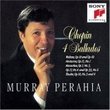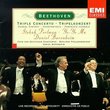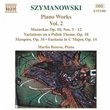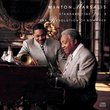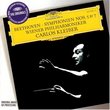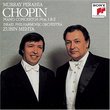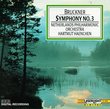| All Artists: Ludwig van Beethoven, Murray Perahia Title: Beethoven: Piano Sonatas Nos. 17, 18, 26 Members Wishing: 0 Total Copies: 0 Label: Sony Release Date: 10/25/1990 Genre: Classical Styles: Forms & Genres, Sonatas, Historical Periods, Classical (c.1770-1830), Modern, 20th, & 21st Century, Romantic (c.1820-1910) Number of Discs: 1 SwapaCD Credits: 1 UPC: 074644231922 |
Search - Ludwig van Beethoven, Murray Perahia :: Beethoven: Piano Sonatas Nos. 17, 18, 26
 | Ludwig van Beethoven, Murray Perahia Beethoven: Piano Sonatas Nos. 17, 18, 26 Genre: Classical
|
Larger Image |
CD DetailsSimilarly Requested CDs
|
CD ReviewsSuper Sonatas Michael B. Richman | Portland, Maine USA | 12/11/2000 (5 out of 5 stars) "Instead of buying one of those massive boxed sets compiling all 32 of Beethoven's Piano Sonatas, I have opted to buy individual performances of these works. In my classical self-education this has given me the opportunity to hear performances by a variety of pianists -- Horowitz, Kissin, Serkin, Barenboim, Pollini, and now Murray Perhaia -- playing some of history's greatest compositions for the instrument. Perhaia's renditions of Beethoven's 17th, 18th and 26th Sonatas are performed impeccably. While I don't have other recordings of the "Tempest" (the 17th) or the 18th, I do have Rudolf Serkin performing "Les Adieux" (the 26th), and Perahia's is every bit its equal. I am certain that there are other versions of these three Sonatas that are equal to Perahia's performances, but surely there are not any that exceed it." Understanding of Style and Warmth of Tone is Astonishing! Raymond Vacchino | Toronto, ON. Canada | 03/23/2008 (5 out of 5 stars) "Murray Perahia is a representative of the modern school with some differences. He is a serious pianist who avoids suggestions of flashiness in his playing. Musicians and the international public admire the finish of his playing, his warm sound and obvious dedication. Unlike Watts and Gutierrez, he is not a heroic pianist but can tackle any repertoire with authority and virtuosity.
This recording begins with Beethoven's Sonata Op.31 No.2 (Tempest). Perahia begins the brief Largo with a superbly paced, drawn-out broken chord and his (pp) is truly on form. The Allegro is responsive to the excitement of the moment yet the tempo is controlled allowing the pairs of eights in the right-hand to sound clearly separated and never rough. Perahia conveys a robust, solidly stated reading of the movement reaching considerable levels of intensity. The sforzandos have the needed rhythmic bite and when the Largo is reached again he makes impressive use of the pedal creating an expressive, atmospheric change of mood. The most difficult aspect of the movement is the rapid allegro tremolo. Perahia's virtuosity allows him to keep them free flowing. In the Adagio movement, Perahia has plenty of tonal lustre and balance. As the character intensifies, he delivers an impassioned noble drama and magnificent changes in dynamic scope. The Allegretto is superbly paced allowing all the fine musical details time to be truthfully defined. Op.31 No.3 in E flat, is one of Beethoven's gems. Perahia captures the questioning character of the first two bars, followed by the dark pondering chords which never reoccur with a ritardando. From this point Perahia takes off with a natural swing characterizing the playful, rhythmic aspects and long flowing scale passages. In the Scherzo, Perahia plays with considerable liveliness, but, not at a forced pace following the "Allegretto vivace" indication. His approach is authoritative and he gives achingly intense bite to the (sf) markings which occur suddenly throughout, and proves his ability to be sensitive and forceful as required. The tension in the playing of the massive (ff) chords provides the expected tension and dramatic lift. The Menuetto is performed with a warmth of tone that carries quite sufficient emotional force. The large octave leaps in the Trio are always gracious and the entire section is kept perfectly steady. Perahia wastes no time launching into the Presto. He plays with the liveliness unique to Beethoven's "con fuoco" marking. The tension in this playing is extremely high and compelling throughout. Perahia moves on to the E flat Sonata Op.81a (Les Adieux). Within the opening eight bars the dynamic markings change from (p-pp-ppp). This is a challenge to the greatest of pianists, but Perahia has supreme control when it comes to sound and touch no matter how soft or loud. Within the opening, he keeps the tone warm but does not allow it to become indistinct. With his immaculate touch, subtle range of color and commanding technique, he draws every ounce of poetry and temperament from the composition. The cohesion within long phrases is so magnificently maintained that our attention to the melodic flow is never broken. When needed there is compelling tension and a sound that is bright but never aggressive or forced. Overall Perahia's playing throughout this recording is imaginative and characterful. It is always memorably resourceful, varied and involving, offering a new version of comparable charisma and sophistication. Author: Raymond Vacchino M.Mus. Classical Music Critic" |

 Track Listings (10) - Disc #1
Track Listings (10) - Disc #1